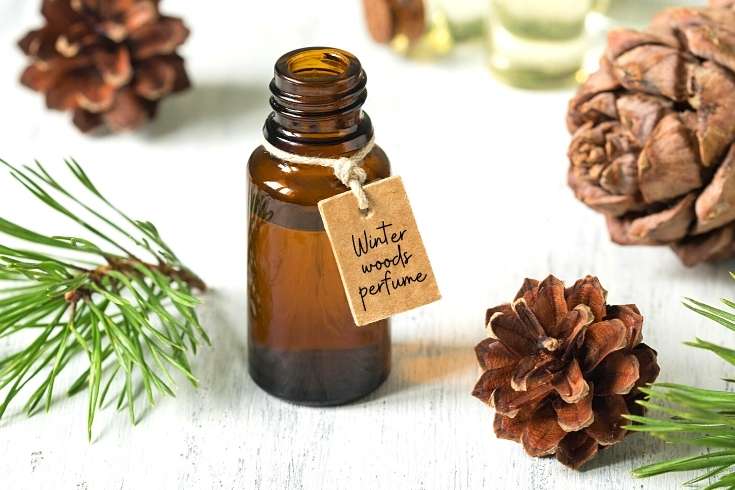
Winter Essential Oil Blends for Crafting Natural Perfume Recipes
Create custom winter essential oil blends with this overview on how to blend essential oils. Then use your essential oil blends to create natural, essential oil perfumes. Three ways to create long lasting essential oil perfumes along with recipe ideas, information on blending factors, fragrance notes and fixatives, plus easy blending tips for beginners.

I like to change my personal scent with the seasons. Now that the snow is falling, it’s time to make winter essential oil perfume recipes. I couldn’t decide on just one winter essential oil blend for these natural perfumes, so I made three: a spray on, a roll on and a solid perfume.
Learn more about how to make your own natural perfume with essential oils. Plus get ideas for winter essential oil blends that are perfect to use throughout the season. Although I did include some Christmas scents, such as Christmas tree, these essential oil blends will work all winter and are not just for Christmas season.
Before we jump into how to create winter essential oil blends for perfumes, you first need to have an understanding of essential oil fragrance notes. Not only will understanding how fragrance notes work help you create a balanced and complex essential oil blend, it also allows you to create fragrances that last longer. After you’ve learned about fragrance notes, I’ll then move onto how to to create blend essential oils to make your winter essential oil blends. Then follow up with how make natural essential oil perfume recipes three ways.
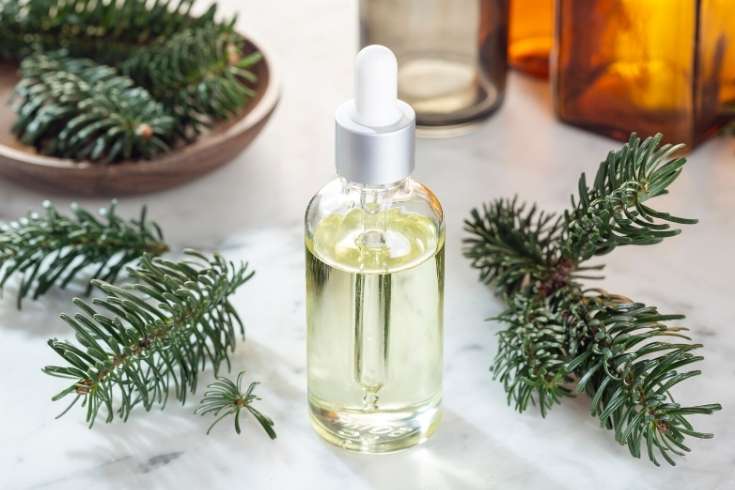
Fragrance Notes for Creating Winter Essential Oil Blends
To create an essential oil blend for perfumes, you need to have an understanding of essential oil fragrance notes. There are three fragrance notes: base notes, top notes and middles notes. By understanding the different essential oil notes, you are able to create a harmonizing and balanced, winter essential oil blend.
Top Notes:
The top note is the easiest scent to detect in an essential oil blend. Essential oils with this fragrance note tend to be light and sharp. They also evaporate quickly, typically within five to ten minutes. This why it’s recommended you use a fixative (or a base note) when formulating your essential oil blends. (More on that below.) Good choices for top not essential oils in a winter essential oil blend include:
- Bergamot
- Cajeput
- Coriander
- Eucalyptus
- Grapefruit
- Lemon
- Lime
- Mandarin
- Orange
- Peppermint
- Sage
- Spearmint
- Tangerine
Middle Notes:
The middle notes in an essential oil blend should last about two hours. They are the body of the essential oil blend. Typically lasting up to two hours, middle note essential oils include:
- Bay
- Cardamom
- Chamomile
- Cypress
- Ho Wood
- Lavender
- Nutmeg
- Pine
- Rosemary
Base Notes:
The base note is the bottom note of your aroma blend. Also known as a dry out note, base notes typically serve as fixatives in an essential oil blend as their scent evaporates slowly. These are the scents that last the longest. Good ones to use are:
- Balsam Peru
- Cassia
- Cinnamon
- Cedarwood
- Clove
- Frankincense
- Ginger
- Myrrh
- Patchouli
- Sandalwood
- Ylang Ylang
If you are making winter essential oil blends to create natural perfumes, then you’ll want to include essential oils from each fragrance note. While using all three fragrance notes is not a mandatory requirement for a pleasing essential oil blend, it will allow you to create a more complex fragrance for your essential oil perfume blends. You’ll also find that including a base note in your blends, will result in a longing laster fragrance overall, even more so if that base note is also a fixative. You can discover more on the science of perfumery and how to use fragrance notes in this natural perfumery course.
I also recommend these printable worksheets with essential oil blending factors are a great resource to help you get started making your own natural perfumes.

Essential Oil Perfume Fixatives
By nature, essential oils evaporate more quickly than fragrance oils. This means that your scent won’t last as long after you apply it to your skin. You can help your winter essential oil blends and perfume recipes last longer by using what is called a perfume fixative.
An essential oil fixative slows down the evaporation of your essential oils. This not only helps the scent last longer, but it also keeps the scent consistent. Without a fixative, you’ll find that the different essential oils evaporate at different times. You’ll lose the lighter scents early on, leaving you with only the heavier, darker scent notes as these evaporate. However, by using a fixative as part of your essential oil blend formulation, you can slow down the evaporation process. This in turn will give you a truer scent to the original blend. It also means that the fragrance you created will last longer.
You’ll find that many of the base note essential oils also double as perfume fixatives. You can learn more about the different natural fixatives in my write up on essential oil roll on perfume recipes. This post contains an expansive list of essential oils that work as fixatives when creating essential oil blends and natural perfumes. It also includes scent descriptions and complimentary essential oils for each of the 18 fixatives covered, with information on where to buy ready made solid perfume fixatives if you aren’t quite ready to make your own.
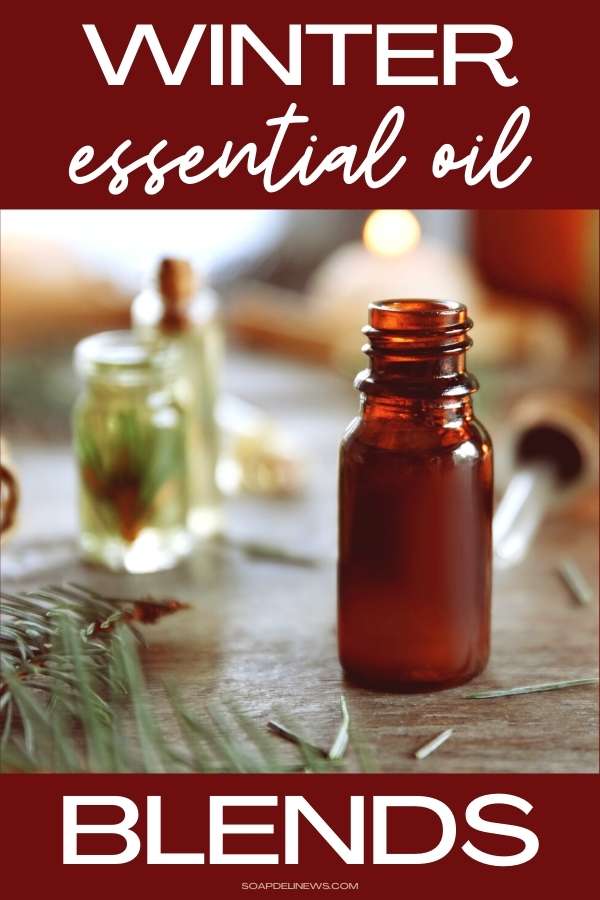
How to Make Winter Essential Oil Blends
Choose Essential Oils Based On Fragrance Notes
To make your own winter essential blends, you should choose at least three essential oils, each with a different fragrance note. Of course, this is only a guide. However, it’s an easy way to get started formulating your own blends. You can choose more than three essential oils with varying fragrance notes, though it’s best to start simple. As essential oils tend to be expensive, you don’t want to invest in making a complex blend and have it not work out.
I highly recommend using a base note and/or a fixative in your blends. This allows your fragrance to last longer, whether you are using it in a diffuser or to create natural perfumes. Otherwise, you may be disappointed to find that the scent of your winter essential oil blends fades quickly.
Pick Essential Oils That Compliment One Another
In addition to choosing essential oils for your blends based on their fragrance notes and staying power, you should also choose essential oils that compliment one another. I recommend choosing an essential oil with a fragrance you like. You can then search for that essential oil on google, or an essential website, such as Mountain Rose Herbs. The results should tell you which essential oils blend well with the essential oil you’ve chosen. You can then use this information to choose essential oils with corresponding fragrance notes needed to complete your winter essential oil recipe blend.
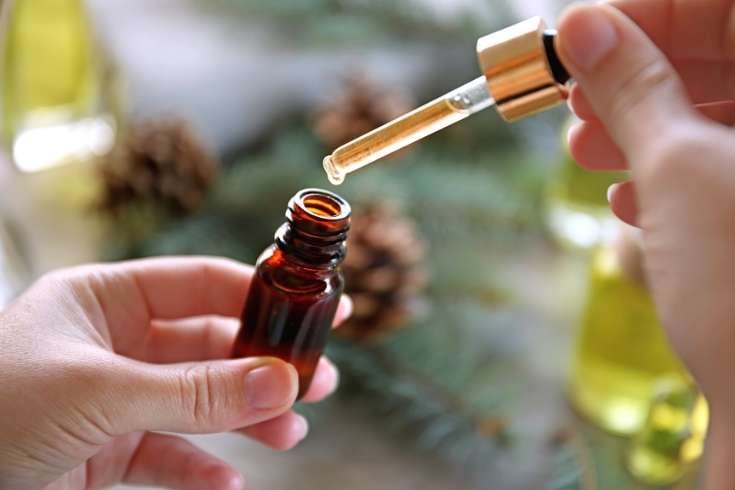
Use Small Glass Bottles to Experiment
As previously mentioned, essential oils aren’t cheap. Therefore, I use small, amber glass bottles to make my blends in small quantities. By using small glass bottles and adding just one or two drops at a time, you can experiment with ratios to create the perfect winter essential oil blend, without wasting any unnecessary product if you make a mistake.
You can use a clean 15 mL essential oil bottle, but I like to use 5 mL bottles. They are smaller, and make more sense for experimenting. Be sure to label your bottles so you know what’s inside each one, once you’ve created your blend. I also recommend using an essential oil journal or notebook to keep track of your essential oil recipes.
Consider Essential Oil Blending Factors
To blend essential oils, you can consider their blending factors. A blending factor is a scale from 1 to 10 that states how strong a scent is. You use blending factors and some math to determine how many drops of each oil to use. I do use blending factors often, but you do not necessarily need to use them to create your own winter essential oil blends.
Peppermint, for example, has a blending factor of 1. This means that you should use it in the least amount in an essential oil blend. However, if you really like peppermint, you can use more than what is suggested. Blending factors are handy when creating essential oil blends, but ultimately you should create a blend that you like and want to wear.
You can learn more about blending factors here. Alternately, you can also take a perfumery course for more in depth information.
Create Your Winter Essential Oil Blends
With your empty bottle and a notebook, start by adding 1 drop of each essential oil that you choose into the bottle. Then add more drops of each oil until you get the scent that you like. Write down how many drops of each oil you add to create your winter essential oil.
Once you’re satisfied with the scent, place a drop of the blend on a perfumer’s testing strip or piece of paper. Then give your nose a break and smell some coffee grounds to reset your sniffer so to speak. Smell the blend on the paper right away, after an hour, and after two hours. Make notes of the scents you smell each time in your journal. You may need to adjust how much of each oil you use to create your winter essential oil blends. But this is why you start small.
If you do need to make adjustments, repeat the process again. You may have to make several adjustments several times to find the right recipe for your winter essential oil blends.

Winter Essential Oil Blends for Natural Perfumes
While creating custom winter essential oil blends can be an exciting process, you may also find it a little intimidating to get started. Therefore, I’m including recipes for my favorite winter essential oil blends. I’ll also teach you how to use these blends in spray on, roll on, and solid essential oil perfume recipes, so you’ll have choices.
Make one or make all three natural perfume recipes with these essential oil blends. It’s all up to you! Personally, I like making more than one type of perfume. This provides me with a variety of winter perfume options. It also allows me to create more than one winter essential oil blend and use my blends in more ways.
Winter Essential Oil Blend Recipes
You can create your own winter essential oil blends or use one of the following blends when making my essential oil perfumes. Feel free to customize these blends. However, keep in mind that they are formulated for their top, middle and base notes. While not all of these recipe blends have a top, middle and base note, each of these winter essential oil blends does have at least two of them.
- Candy Cane Blend: 4 drops Peppermint, 1 drop Cassia and 1 drop Spearmint
- Spiced Cider Essential Oil Blend: 3 drops Nutmeg, 3 drops Orange and 1 drop Clove
- Christmas Blend: 1 drop Pine, 1 drop Cinnamon, 1 drop Ginger and 1 drops Orange
- Fireside Bakery Blend: 2 drops Cinnamon, 2 drops Frankincense and 2 drops Orange
- Winter Woods Blend: 3 drops Grapefruit, 1 drop Black Pepper and 1 drop Pine
- Christmas Tree Blend: 2 drops Fir Needle, 2 drops Pine and 1 drop Patchouli
- Uplifting Blend: 2 drops Peppermint, 2 drops Eucalyptus and 2 drops Orange
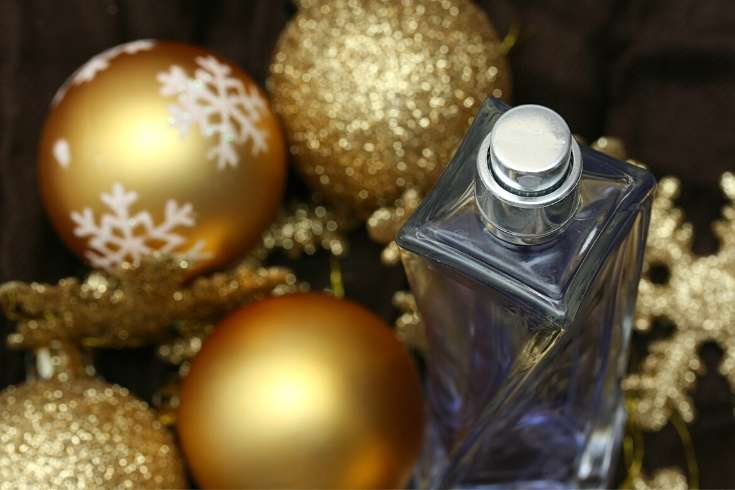
Winter Spray On Essential Oil Perfume Recipe
Use this spray on essential oil perfume recipe to add a light scent when you spray it on your skin. You can use perfumer’s alcohol, witch hazel or high proof vodka. Personally, I prefer to use perfumer’s alcohol because it has no odor and also has an emulsifier. The emulsifier helps the water in the alcohol and the essential oils mix together.
Witch hazel and vodka are cheaper, but they can alter the scent of your winter essential oil perfume recipes. You will need to shake the bottle gently before each application to mix the water and oils. However, I recommend adding polysorbate 20 to ensure the essential oils are properly diluted and evenly dispersed in this case.
If you do use vodka, look for a high proof like Everclear, which is 190 proof. If you can not find a high proof vodka, use the highest proof that you can get.
I don’t recommend using rubbing alcohol (or isopropyl alcohol) to make a spray on perfume recipe. Rubbing alcohol has a strong odor, which can affect how your perfume smells. Rubbing alcohol can also irritate your skin and cause redness or itching.
I formulated this essential oil recipe to fit in a 25 mL perfume container. This is a standard size for a perfume spray bottle. Of course, you can use a larger bottle and double this if desired. However, for a seasonal winter perfume recipe, 25 mL should be plenty for you.
Ingredients:
23.5 ml perfumer’s alcohol or high proof vodka
1.5 mL essential oils (35 drops)
Directions:
Create a master blend of essential oils in a small bottle.
Then add the alcohol to the empty perfume bottle and 1.5 mL or 35 drops of your winter essential oil blend.
Place the lid on and shake gently to combine.
If you use vodka, shake before each use.

Winter Roll On Essential Oil Perfume Recipe
If you make a roll on essential oil perfume recipe, you can use a carrier oil or cyclomethicone. You can also use a combination of a carrier oil and cyclomethicone.
Cyclomethicone is an odorless and clear liquid. It has a silky texture that feels good on your skin without leaving your skin feeling oily or sticky. It is a type of silicone, and it helps the other ingredients apply smooth and evenly for topical application.
Cyclomethicone is not significantly absorbed through the skin. This helps your winter essential oil perfume recipes sit on the skin for longer periods of time. As the cyclomethicone evaporates, the essential oils evaporate with it, which makes the perfume smell good for hours.
If you use a carrier oil, choose one that is odorless and absorbs quickly. I like to use fractionated coconut oil because it absorbs fairly quickly and is clear and odorless. You can also use sweet almond oil or jojoba oil.
You can also mix cyclomethicone and a carrier oil. I normally mix them at a 1:1 ratio, but you can use more or less of one or the other.
Note that the oil may stain clothing. If you are worried about that, I suggest that you use cyclomethicone to make your roll on winter essential oil perfume recipes.
Ingredients:
6 drops essential oils
½ ounce carrier oil or cyclomethicone
Directions:
Create a master blend of your winter essential oil blend.
Then put 6 drops in a ½ ounce (15 mL) roller bottle.
Fill with ½ ounce of a carrier oil or cyclomethicone.
Roll between your hands to mix.
Apply to pulse points like your wrists or neck.
Winter Solid Perfume Recipe
To make a homemade solid perfume recipe, you’ll need beeswax and a carrier oil. For a vegan alternative, you can also use carnauba wax. However, you will need to reduce the amount of wax used by 25 percent. This because carnauba wax has a higher melting point than beeswax.
You can use any carrier to make a solid perfume. I prefer to use sweet almond oil or fractionated coconut oil. Both absorb into the skin quickly and are odorless.
For the best ratio of beeswax to oil, use 1 part beeswax to 3 parts oil. This will be a firm solid that melts slowly. It’s not sticky and has a decent slip when you apply it to the skin.
Ingredients:
3 ounces carrier oil
1 ounces beeswax
30 to 50 drops of essential oils
Directions:
Melt the beeswax and carrier oil in a double boiler over medium heat. This will take a while, so just keep stirring occasionally.
Once it’s melted, remove from heat and add the essential oils.
Stir for one minute.
Pour into tins or glass jars and let cool completely.
You can use this essential oil solid perfume as soon as it’s completely cooled.

Applying Winter Essential Oil Blend Perfumes
Even if you use a fixative or a winter essential oil blend with a base note, essential oil perfume recipes are more likely to wear off quicker than a perfume with a fragrance oil. To help get the most scent out of your perfume, apply your essential oil perfume to your pulse points. This includes your inner wrist, the base of your neck, behind your ears or in the inner elbow. These areas tend to be warmer, so they will release more of the scent.
Since these winter essential oil perfume blends use essential oils and have aromatherapy effects, you shouldn’t apply them more than three or four times a day. The scent will wear off as the day goes on, but try to wait at least 4 hours between applications.
Want to learn more about how to make custom winter essential oil blends? I recommend the Online Natural Perfumery Course from The Herbal Academy. Throughout this educational course, you’ll learn more about the science behind making natural perfumes and how to use them.
Where Can I Buy Essential Oils for Winter Essential Oil Blends?
I typically shop around for essential oils. Generally, there isn’t a single company that carries all of the essential oils I need. This is especially true for more expensive or rare essential oils. However, there are three essential oil companies I use regularly when making a purchase. They include Mountain Rose Herbs, Plant Therapy and Simply Earth.
You can find more essential oil blend recipes here along with a great collection of DIY essential oil gifts here. Also be sure to follow Soap Deli News via Facebook, Twitter, Pinterest and Instagram for more DIY ideas and projects. Or subscribe to my newsletter.


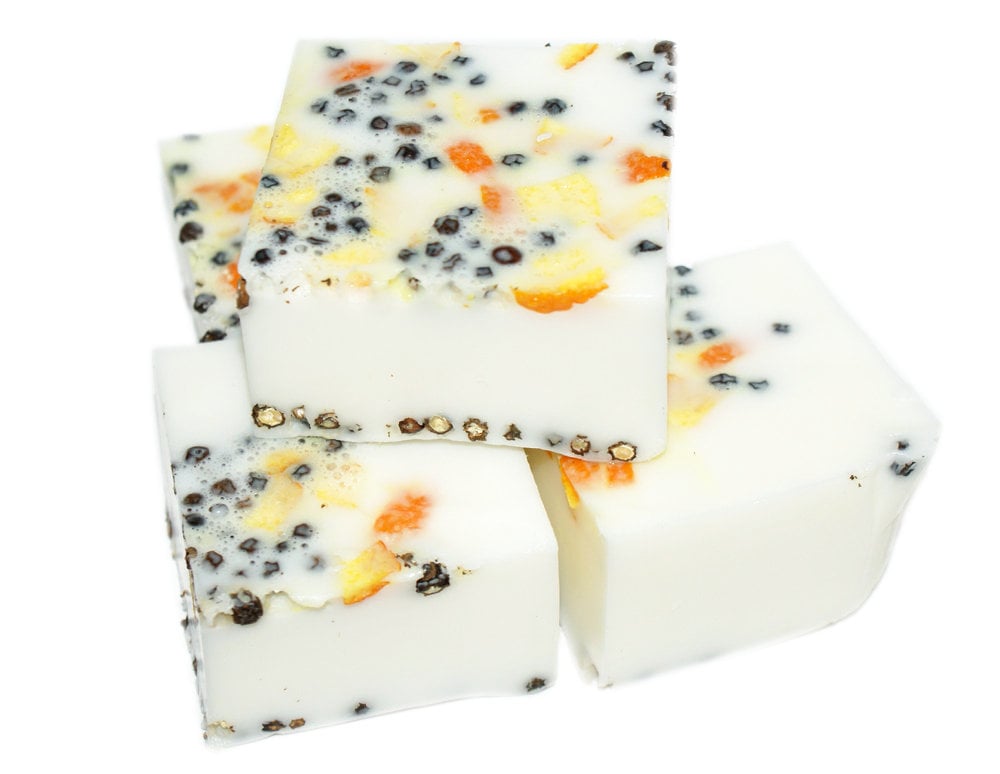

2 Comments
Cari
December 18, 2020 at 12:57 pm
Thank you for breaking this down so it’s easy to understand. I can’t wait to try some of these blends and recipes!
Jane
February 13, 2021 at 4:28 am
Great overview. I hadn’t heard of cyclomethicone, will have to give it a try.
Comments are closed.